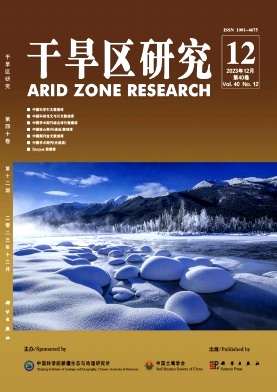Distribution Patterns of the Species Richness of Plants and Animals in Xinjiang,China
Q3 Environmental Science
引用次数: 7
Abstract
There are 3 637 wild vascular plants,425 birds and 154 mammals in Xinjiang. In this study,a database of the distribution of all the plants,birds and mammals in Xinjiang was compiled,the distribution maps of the species richness of plants and animals were charted,the relations between these species were analyzed,and distribution hotspots of the species richness were obtained. The results revealed that the species richness in the northern and western parts of Xinjiang was higher than that in the southern and eastern parts. There were positive correlations of the richness among the vascular plants,halophytes,ephemeral plants,endemic plants and key protective plants,and there were also positive correlation between the richness of vascular plants and that of birds and mammals. Hotspots of different taxonomic groups were incongruent. Hotspots of vascular plants were distributed in the western part of the Altay Mountains,the western and central parts of the Tianshan Mountains,and the mountains in the west Junggar Basin; those of birds extended as far as the east Tianshan Mountains and the southern slope of the west Tianshan Mountains; and those of mammals were distributed only in the Altay Mountains and the west Tianshan Mountains. Altogether only 8.9% of the hotspots were shared by all the three groups. Current nature reserve networks cover the most of these hotspots. However,the Shawan-Manas region is an important conservation gap for biodiversity in Xinjiang.中国新疆动植物物种丰富度的分布格局
新疆有野生维管植物3637种,鸟类425种,哺乳动物154种。本研究建立了新疆所有植物、鸟类和哺乳动物的分布数据库,绘制了动植物物种丰富度分布图,分析了物种之间的关系,获得了物种丰富度的分布热点。结果表明,新疆北部和西部的物种丰富度高于南部和东部。维管植物与盐生植物、短命植物、特有种植物和重点保护植物的丰富度呈显著正相关,与鸟类和哺乳动物的丰富度呈显著正相关。不同类群的热点不一致。维管植物的热点地区主要分布在阿尔泰山脉西部、天山山脉西部和中部以及准噶尔盆地西部山区;鸟类的栖息地一直延伸到天山东部和天山西部的南坡;哺乳动物仅分布在阿勒泰山脉和西天山。总共只有8.9%的热点被所有三个群体共享。目前的自然保护区网络覆盖了这些热点地区的大部分。然而,沙湾-玛纳斯地区是新疆生物多样性保护的重要缺口。
本文章由计算机程序翻译,如有差异,请以英文原文为准。
求助全文
约1分钟内获得全文
求助全文
来源期刊

干旱区研究
Environmental Science-Water Science and Technology
CiteScore
2.50
自引率
0.00%
发文量
4294
期刊介绍:
 求助内容:
求助内容: 应助结果提醒方式:
应助结果提醒方式:


